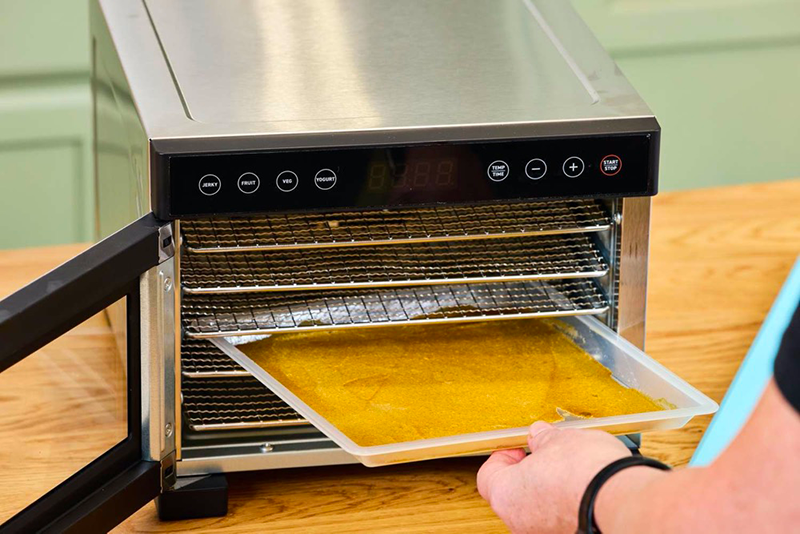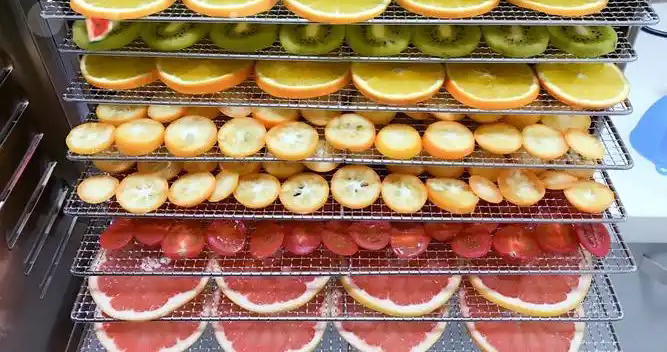
Content Menu
● Understanding Food Drying Technologies
● Heat Pump Dryers
>> How Heat Pump Dryers Work
>> Advantages of Heat Pump Dryers
>> Disadvantages of Heat Pump Dryers
● Vented Dryers
>> How Vented Dryers Work
>> Advantages of Vented Dryers
>> Disadvantages of Vented Dryers
● Heat Pump vs. Vented Dryer Comparison
● Choosing the Right Dryer for Your Needs
● Additional Considerations
>> Energy Efficiency Ratings
>> Technological Advancements
>> Case Studies
● Conclusion
● FAQ
>> 1. What is the main difference between heat pump dryers and vented dryers?
>> 2. Are heat pump dryers worth the investment?
>> 3. How do I determine which dryer is best for my business?
>> 4. Can I use a vented dryer for all types of food products?
>> 5. What maintenance do these dryers require?
In the world of food processing, drying is a crucial step that significantly influences the quality and shelf life of products. As a manufacturer of food drying machines, it is essential to understand the various types of dryers available, particularly heat pump dryers and vented dryers. This article will explore these two technologies in detail, comparing their efficiency, costs, and suitability for different applications in the food industry.

Understanding Food Drying Technologies
Food drying is a method used to preserve food by removing moisture. The main types of dryers include:
- Heat Pump Dryers: These utilize a refrigeration cycle to extract moisture from food while maintaining a controlled temperature.
- Vented Dryers: These operate by blowing hot air into the drying chamber and venting the moist air outside.
Each type has its advantages and disadvantages, which we will explore further.
Heat Pump Dryers
Heat pump dryers are becoming increasingly popular in food processing due to their energy efficiency and ability to operate at lower temperatures.
How Heat Pump Dryers Work
Heat pump dryers use a closed-loop system that circulates refrigerant. The process involves:
1. Evaporation: The refrigerant absorbs heat from the air inside the dryer and evaporates.
2. Compression: The vapor is compressed, raising its temperature.
3. Condensation: The hot vapor then releases heat as it condenses back into liquid form.
4. Expansion: The refrigerant is expanded, cooling it down before it re-enters the evaporator.
This cycle allows heat pump dryers to recycle heat, making them highly efficient.
Advantages of Heat Pump Dryers
- Energy Efficiency: Heat pump dryers can save up to 50% more energy compared to traditional vented dryers.
- Lower Operating Temperatures: They operate at lower temperatures, which helps preserve the nutritional quality and flavor of food products.
- Environmentally Friendly: By using less energy, they have a lower carbon footprint.
- Versatility: Heat pump dryers can be adjusted for various drying processes, making them suitable for different types of food products.
Disadvantages of Heat Pump Dryers
- Higher Initial Cost: The upfront investment for heat pump dryers can be higher than vented dryers.
- Longer Drying Times: Due to lower temperatures, drying times may be longer.
- Complex Maintenance: The technology involved may require specialized maintenance skills and knowledge.
Vented Dryers
Vented dryers are the traditional option for drying food and are widely used in various industries.
How Vented Dryers Work
Vented dryers function by:
1. Heating Air: A heating element warms the air.
2. Circulating Air: This hot air is blown into the drying chamber.
3. Moisture Removal: The moist air is vented outside, allowing fresh air to enter.
This process continues until the desired moisture content is achieved.

Advantages of Vented Dryers
- Lower Initial Cost: Vented dryers are generally less expensive to purchase than heat pump models.
- Faster Drying Times: They can achieve quicker drying times due to higher operating temperatures.
- Simplicity of Design: Vented dryers typically have a simpler design, making them easier to operate and maintain.
Disadvantages of Vented Dryers
- Higher Energy Consumption: These dryers often consume more energy due to constant heating and venting.
- Quality Concerns: High temperatures can degrade the quality of some food products, affecting taste and nutritional value.
- Environmental Impact: Increased energy consumption leads to a larger carbon footprint compared to heat pump dryers.
Heat Pump vs. Vented Dryer Comparison
To help you make an informed decision, here's a comparison table highlighting key differences between heat pump and vented dryers:
| Feature | Heat Pump Dryer | Vented Dryer |
| Energy Efficiency | High (up to 50% savings) | Low (higher energy consumption) |
| Operating Temperature | Low (preserves quality) | High (faster drying) |
| Initial Cost | Higher | Lower |
| Environmental Impact | Lower carbon footprint | Higher carbon footprint |
| Drying Time | Longer | Shorter |
| Maintenance Complexity | More complex | Simpler |
| Versatility | High | Moderate |
Choosing the Right Dryer for Your Needs
When selecting between a heat pump dryer and a vented dryer for your food processing needs, consider the following factors:
1. Product Type: If you are drying delicate foods that require careful handling, a heat pump dryer may be more suitable due to its lower temperatures. For example, herbs or fruits that are sensitive to high heat benefit from this method as it retains their flavor and nutrients better.
2. Volume of Production: For large-scale operations where speed is essential, vented dryers might be preferred despite their higher energy costs. They allow for rapid processing of bulk items like grains or vegetables that can withstand higher temperatures without compromising quality.
3. Budget Constraints: Evaluate your budget not only for initial costs but also for long-term operational expenses related to energy consumption. While heat pump dryers might require a bigger investment upfront, they could lead to significant savings over time through reduced energy bills.
4. Environmental Considerations: If sustainability is a priority for your business, opting for a heat pump dryer could align better with your goals. Many consumers today prefer products that are processed using environmentally friendly methods, which can enhance your brand image.
5. Space Availability: Ensure you have adequate space for installation, especially if considering a vented dryer that requires external ventilation. Assess whether your facility can accommodate ductwork or if you need a more compact solution like a heat pump dryer that can fit into tighter spaces without extensive modifications.
Additional Considerations
Energy Efficiency Ratings
When comparing these two types of dryers, it's important to look at their energy efficiency ratings. Many manufacturers provide specific metrics on how much energy each model consumes during operation. This information can help you project long-term costs associated with running each type of dryer in your facility.
Technological Advancements
The technology behind both heat pump and vented dryers continues to evolve. Newer models often incorporate advanced features such as:
- Smart Controls: Allowing users to monitor and adjust settings remotely via mobile apps.
- Enhanced Sensors: Providing real-time feedback on moisture levels within the dryer chamber for optimal performance.
- Improved Insulation: Reducing energy loss during operation and improving overall efficiency.
Investing in modern equipment with these features can lead to better performance and lower operational costs over time.
Case Studies
Several case studies illustrate how businesses have benefited from choosing one type of dryer over another:
- A small organic herb producer switched from a vented dryer to a heat pump dryer and reported improved flavor retention in their dried herbs along with significant energy savings over six months.
- A large-scale vegetable processor found that while vented dryers allowed for faster throughput during peak seasons, they faced higher costs due to increased energy bills. After analyzing their production data, they decided to invest in multiple heat pump units that offered better long-term savings despite longer drying times during off-peak periods.
These examples highlight how understanding your specific needs and operational context can guide you toward making an effective choice between heat pump and vented dryers.
Conclusion
In conclusion, both heat pump and vented dryers have their unique advantages and disadvantages when it comes to food drying processes. Heat pump dryers offer superior energy efficiency and better preservation of food quality but come with higher initial costs and longer drying times. On the other hand, vented dryers provide faster results at a lower purchase price but can lead to increased energy bills over time and potential degradation of product quality.
Ultimately, the choice between these two technologies should be guided by your specific needs in terms of product type, production volume, budget constraints, environmental considerations, and space availability. As technology continues to evolve in food processing equipment, staying informed about these options will help you make decisions that enhance both efficiency and product quality in your operations.

FAQ
1. What is the main difference between heat pump dryers and vented dryers?
The main difference lies in their operation; heat pump dryers recycle heat for efficiency at lower temperatures while vented dryers expel moist air outside after heating it.
2. Are heat pump dryers worth the investment?
Yes, despite their higher initial cost, they offer significant long-term savings on energy bills and better preservation of food quality.
3. How do I determine which dryer is best for my business?
Consider factors such as product type, production volume, budget constraints, environmental impact preferences, and available space when making your decision.
4. Can I use a vented dryer for all types of food products?
While vented dryers can be used for many foods, they may not be ideal for delicate items that require lower drying temperatures to maintain quality.
5. What maintenance do these dryers require?
Both types require regular cleaning of filters and vents; however, heat pump dryers may need additional checks on refrigerant levels and seals due to their complex systems.












